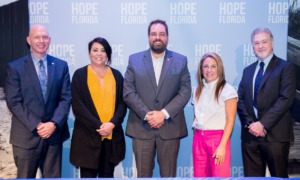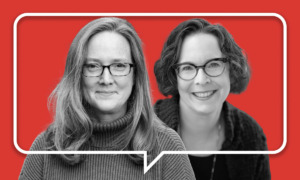The hope that greeted President Obama’s biggest youth initiative last year – replication of the Harlem Children’s Zone in communities around the country – has run into the sobering reality of congressional budget-making.
The Senate Appropriations Committee voted Thursday to fund the Promise Neighborhood Initiative (PNI) at $20 million next year – far less than the $210 million that Obama requested and one-third of the $60 million that a House subcommittee approved two weeks ago.
That raises big questions for the future of a proposal that generated what one applicant called “a mad dash” of excitement, as 339 organizations applied for just 20 grants.
“I’ve never seen the energy around the country that I’ve seen on this,” said Patrick Lester, who spearheaded a lobbying effort to win more congressional funding for PNI.
Last year, Congress approved $10 million for planning replications of the Children’s Zone model in 20 cities, with the winners yet to be chosen. (See the list of applicants.) The 2011 funding would be for implementation and additional planning grants.
The federal budget for 2011 won’t be set for months, as the two houses of Congress iron out their differences. But even a lobbying campaign organized by the Alliance for Children and Families and the United Neighborhood Centers, including a letter signed by 300 youth and community organizations, yielded no member of congress willing to carry the argument for PNI in budget negotiations. Thursday’s vote by the Senate Appropriations Committee accepted all the budget recommendations made Tuesday by its subcommittee on Labor, Health and Human Services and Education.
Pressure to trim the federal deficit quashed any enthusiasm for new program funding, Lester said. He expects PNI to be get something between the House subcommittee’s $20 million and the Senate committee’s $60 million.
That leaves supporters thinking about how to effectively carry out the PNI concept, which wraps academic programs with comprehensive family and community supports, such as parenting classes, after-school programs and health services. (A description of the PNI is here.)
There appear to be a few possible answers.
What Next?
One idea would be for the Department of Education, which oversees PNI, to reduce the number of grantees, thus giving each one more money. “You’d rather have fewer grants that are done well than a bunch of grants that are done poorly,” Lester said.
With thin funding, poorly performing projects could be used as proof that the model is flawed.
Lester said he is not advocating that move and doesn’t know if it is possible under the grant regulations.
Organizations that get grants might have to supplement the federal money with other national, state and local funds, Lester said.
He and Peter Goldberg, CEO of the Milwaukee-based Alliance for Children and Families, said that because PNI is a collaboration concept rather than a creation of all new services, practitioners might be able to piece together existing programs to make a PNI work. Think of PNI as “the glue,” Lester said.
“The pieces are already being funded, like after-school, home visitation, pre-K,” he said. “The money is out there to do this. What you need is the glue to bring them together.
“You don’t necessarily need a whole program top-to-bottom with Promise Neighborhood money.”
Along those lines, Goldberg took a long-term view. “This isn’t just about this one-time authorization,” said Goldberg, whose membership organization represents primarily private child welfare providers. “This is about what the Promise Neighborhood is conceptually – is it going to be something that’s a long-term way of thinking about how to deliver social services?”
Creating cohesive, community-wide collaboration is what excited service providers, Goldberg said. “I don’t think you would have had 300-and-whatever applicants go through the process if this was only about money. There’s something resonating about the approach.”
On a United Neighborhood Centers blog, Lester wrote of how numerous organizations devoted scarce time and personnel resources to applying for the grants on a short deadline, even though their odds of winning one of only 20 awards are slim. One applicant described the “mad dash,” while another said, “I was on lockdown. My boss had her cell phone strapped to her side.”
With that kind of enthusiasm, Goldberg said, “This is more than chasing dollars.”






























